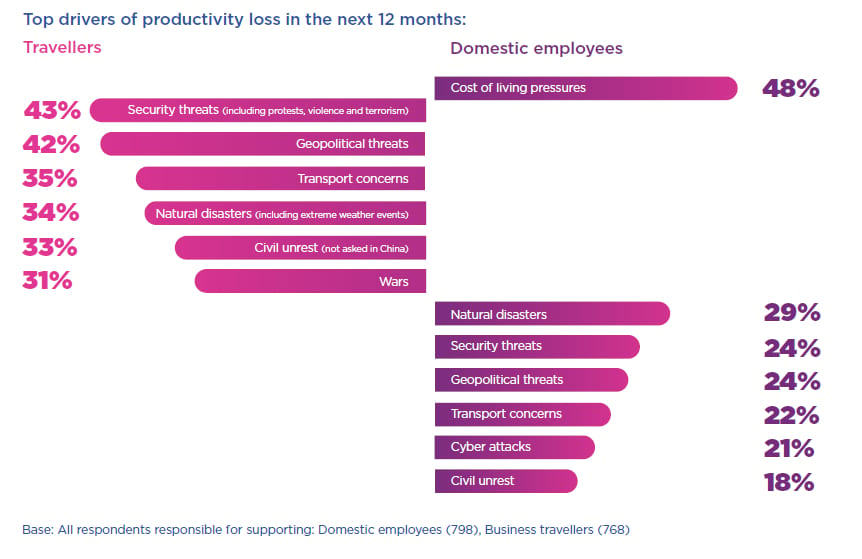february 2023


Cybersecurity Trends for 2023 & What to Expect

ipopba / iStock / Getty Images Plus via Getty Images
The rapid proliferation of new attack surfaces means more opportunities for threat actors than ever before, and this will only continue as new technologies are introduced, according to Vulcan Cyber’s Cyber Risk in 2022: A 360° View report.
The report, developed by the Vulcan Cyber in-house research team, Voyager18, highlights the biggest developments and underlying narratives to cyber risk in 2022 and suggests ways to improve and maintain security posture as we enter 2023. According to the report, organizations need to be aware of the following seven trends in 2023:
1. More attacks in the cloud
Security in the cloud remains immature, with default cloud services often providing inadequate essential security functions. Threat actors are keenly aware of this, and security teams must keep up with their organizations’ appetite for cloud adoption.
2. Mobile security attack surface
With around two-thirds of the world’s population using smart devices as of 2021, it is no surprise that mobile is fast emerging as a major target for threat actors. Attackers leverage easy opportunities in e-commerce, banking and online booking applications. With mobile devices not going anywhere soon, this attack surface will only continue to grow.
3. Threat actors turn to IoT
Expect to see more sophisticated and targeted attacks on Internet of Things (IoT) devices and a greater range of malicious actors targeting this technology in their attacks.
4. Healthcare sector at risk
The healthcare sector is increasingly vulnerable with more patient data being stored online and in the cloud, and the residual impact of the COVID-19 pandemic on healthcare services.
5. AI in security efforts
A welcome development for 2023 will be the increased implementation of advanced machine learning and other artificial intelligence (AI) techniques in identifying and responding to threats.
6. Users as an attack surface
An organization’s user base will remain a primary target, with threat actors leveraging phishing, social engineering, and other techniques to try to compromise the organization’s employees and their customers.
7. Diversified cyber risk requires a better solution
With the avenues of attack growing in number, IT security teams cannot rely on outdated methods to stay secure.
The report explores a number of ways organizations can meet the increased demands of the cyber risk landscape, including:
- Making employees part of the company’s security defense
- Keep patches up to date
- Restrict unnecessary access
- Implement multi-factor authentication
- Follow industry best practices
For more information, visit www.securitymagazine.com.
advertisement
advertisement
4 Security Threats For 2023

AndreyPopov / iStock / Getty Images Plus via Getty Images
As the acute impacts of the pandemic subside in many countries, organizations worldwide are still set to encounter significant risks in 2023, according to the International SOS Risk Outlook 2023 report findings.
The report is based on a survey of 1,218 senior risk professionals across 108 countries and provides a detailed view of some of the major risks that organizations must address in 2023.
1. The Impact of Geopolitical Shifts
The Russian invasion of Ukraine was the defining security issue of 2022, highlighting how geopolitics and the threat of interstate conflict are back on the corporate risk agenda. The conflict will still have an impact in 2023, so it is beneficial for organizations to learn how to handle the shifting global risk environment effectively.
Geopolitical volatility will also spread beyond Russia and Ukraine in the next 12 months, as increasing fissures between Russia and the West will impact other conflicts and exacerbate longstanding geopolitical tensions.
Many crisis management teams are learning to deal with a state of “perma-crisis.” It will benefit organizations in 2023 to provide the proper training, investment and support for these teams, as experts have drawn attention to significantly high levels of crisis management fatigue. Managing crisis management fatigue is critical in moving from “perma-crisis” to crisis resilience. Organizations that effectively embed learnings from the last two years will emerge with more robust capabilities to manage challenges.
2. Social Unrest
Social unrest will be a significant item on the C-suite agenda in 2023, as the problem is multifaceted, affecting organizations and employees in many ways. Some themes and critical points for 2023 include:
- Volatility in energy and agricultural markets will fuel unrest, particularly in unstable, fragile economies. Most likely locations: Sub-Saharan Africa, Egypt, Lebanon
- Lack of progress on resolving underlying economic or political issues will provoke growing public dissatisfaction and cycles of unrest where the risk of violence grows over time. Most likely locations: Pakistan, Sri Lanka, Ecuador, Peru, Iraq
Polarization at a global level will be reflected in further domestic polarization inflaming pre-existing triggers for social unrest and, in extremis, influencing more localized violence and criminal activity.

Top drivers of productivity loss in the next 12 months, International SOS Risk Outlook 2023 Report. Image courtesy of International SOS
3. Climate Change
Experts advise that climate change is contributing to an acceleration in the emergence of infectious diseases, illustrated by the multiple “unusual” outbreaks of the 21st century, including SARS, Ebola, COVID-19 and Mpox. A briefing published in Nature Climate Change estimates that “over half of known human pathogenic diseases can be aggravated by climate change.”
Climate change is expected to increase mosquito-borne diseases as temperatures and standing water levels increase. This situation could potentially cause outbreaks of Malaria, Dengue Fever and Zika in places where they have never been present before and more frequent outbreaks in areas where they already exist.
Best practices for combatting these threats include undertaking risk assessments of existing and potential health threats and incorporating forecasts for potential geographic extension of hazards due to climate change and other forces.
4. Business Travel
The report also highlights that most organizations (86%) are keeping travel risk management budgets the same or increasing, so travel will likely continue to grow and return to pre-pandemic levels.
This trend is supported by the International SOS case data, which shows international travel now at 83% of pre-COVID volumes, but travelers are twice as likely to call for advice or assistance.
Business travel is going to be complex in 2023, and mitigation of many issues is essential. It is, however, encouraging that despite rising costs, experts predict that travel management budgets will increase or stay the same in 2023. This investment will be vital to keeping business travelers safe in the year ahead.
For more information, visit www.securitymagazine.com.

february 2023 / SECURITYMAGAZINE.COM


